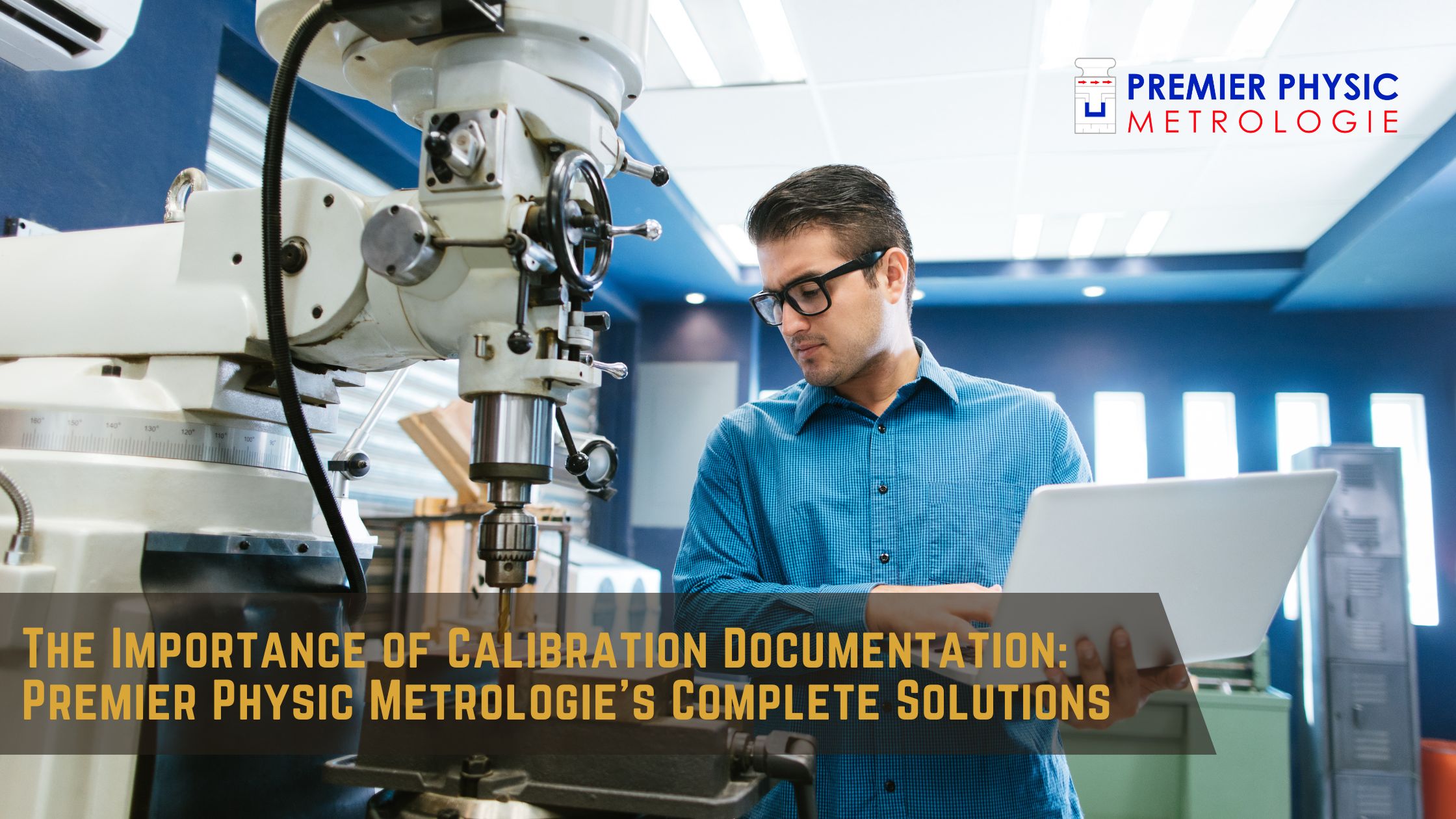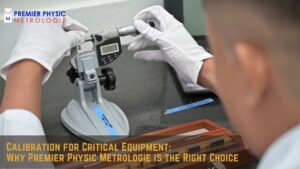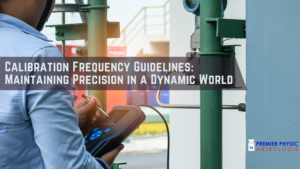Introduction
In industries where precision is critical—whether it be manufacturing, pharmaceuticals, electronics, or healthcare—the importance of accurate measurement and control cannot be overstated. For many businesses, equipment calibration ensures that devices and instruments meet required standards of accuracy. However, simply performing calibration isn’t enough. Proper calibration documentation is essential for regulatory compliance, quality assurance, and operational efficiency.
This article explores the role of calibration documentation, why it is essential for businesses, and how Premier Physic Metrologie offers comprehensive solutions for ensuring your equipment is always compliant and operationally efficient. From regulatory requirements to best practices, we’ll dive into everything you need to know about calibration documentation.
1. Understanding Calibration and Its Importance
a. What is Calibration?
Calibration is the process of comparing the measurements from an instrument or device to a known standard to check and correct its accuracy. Over time, instruments may drift from their original calibration, leading to inaccurate readings, which can have serious consequences in many industries. Regular calibration ensures that these instruments are functioning correctly and consistently delivering precise results.
b. Why is Calibration Critical?
- Accuracy in Measurements: Whether it’s a temperature sensor, a pressure gauge, or a scale, accurate measurements are essential for quality control in manufacturing processes. Incorrect readings can lead to defective products, wasted materials, or even safety hazards.
- Compliance with Standards: Many industries are subject to strict regulations. Whether it’s ISO standards, FDA requirements, or local safety guidelines, businesses must prove that their equipment is correctly calibrated to comply with these standards.
- Risk Mitigation: Failing to calibrate equipment can result in product recalls, safety hazards, and loss of revenue. Calibration reduces the risks of malfunction or inaccuracies that can have a significant impact on both operations and reputation.
2. The Role of Calibration Documentation
a. What is Calibration Documentation?
Calibration documentation refers to the records that detail the calibration process, including the instruments calibrated, the results of the calibration, and any adjustments made. This documentation serves as proof that the calibration was performed and provides a history of the equipment’s accuracy over time.
b. Importance of Calibration Documentation
- Proof of Compliance: Regulatory bodies often require businesses to provide documentation showing that equipment is calibrated according to standards. This documentation proves compliance during audits or inspections.
- Traceability: Calibration documentation provides traceability, meaning businesses can track an instrument’s history of calibration and ensure it consistently meets industry standards.
- Preventive Maintenance: Documentation helps in identifying trends that could indicate equipment is beginning to malfunction. Regularly reviewing calibration data allows businesses to perform preventive maintenance before a major issue arises.
- Minimizing Downtime: Detailed calibration records help companies avoid unexpected equipment failures. Knowing when calibration is due or when previous issues occurred helps optimize maintenance schedules and minimize operational disruptions.
c. Key Elements of Calibration Documentation
Calibration documentation typically includes the following:
- Identification of the equipment (serial number, model, etc.).
- Date of calibration and next due date.
- Calibration procedure used.
- Calibration results, including before and after adjustments.
- Calibration technician’s signature or certification.
- Reference standards used for calibration.
These elements are crucial for regulatory purposes and for maintaining internal quality control.
3. Regulatory and Industry Requirements for Calibration Documentation
a. ISO Standards
For many industries, compliance with ISO standards is a crucial component of doing business. ISO 9001, for example, sets out the criteria for quality management systems, including the requirement for businesses to calibrate their measurement devices regularly. ISO 17025 is specific to calibration laboratories and sets rigorous standards for calibration processes and documentation.
b. FDA Requirements
In the pharmaceutical and medical device industries, the FDA mandates that equipment used in production must be calibrated and that calibration records must be maintained and accessible. The FDA requires businesses to show that their equipment consistently produces accurate results, and without proper documentation, it is impossible to prove compliance.
c. Local and Industry-Specific Standards
Various industries and countries have additional standards for calibration, and businesses must ensure they are compliant with local regulations. In the Philippines, regulatory bodies such as the Bureau of Philippine Standards (BPS) require documentation for certain industries to verify the precision of instruments used in production and quality control.
4. Premier Physic Metrologie’s Complete Calibration Solutions
a. Why Choose Premier Physic Metrologie?
Premier Physic Metrologie is a trusted provider of calibration services in the Philippines, offering a range of solutions tailored to meet industry-specific needs. With years of experience, Premier Physic Metrologie understands the importance of calibration documentation and offers comprehensive solutions that ensure businesses remain compliant and efficient.
b. Calibration Services Offered
Premier Physic Metrologie provides calibration for a wide array of instruments, including:
- Temperature and humidity sensors
- Pressure gauges
- Weighing scales
- Medical devices
- Electrical meters and testing equipment
Each calibration service includes full documentation that adheres to both local and international standards, ensuring that businesses are audit-ready at all times.
c. Complete Calibration Documentation
At Premier Physic Metrologie, the focus is not just on calibrating equipment but also on providing comprehensive documentation that meets regulatory requirements. Their calibration certificates include all the necessary details, including:
- Calibration procedures and standards used.
- Detailed results with traceable data.
- Recommendations for future calibration intervals.
By providing thorough documentation, Premier Physic Metrologie ensures that businesses have the necessary paperwork to demonstrate compliance during audits or inspections.
5. The Risks of Incomplete or Inaccurate Calibration Documentation
a. Audit Failures
Incomplete calibration documentation can result in audit failures, leading to penalties or fines. Regulatory bodies require proof that calibration is conducted correctly and regularly. Missing or incorrect documentation can jeopardize a business’s ability to operate within regulatory frameworks.
b. Quality Control Issues
Without proper documentation, it is difficult to verify the accuracy of equipment, which can lead to quality control issues. This can result in defective products, customer complaints, and damage to a company’s reputation.
c. Increased Costs
Failure to properly document calibration can lead to unnecessary re-calibrations or even equipment failure due to missed maintenance windows. This increases operational costs and decreases efficiency.
6. How Premier Physic Metrologie Helps Businesses Stay Audit-Ready
a. Comprehensive Record-Keeping
Premier Physic Metrologie offers comprehensive record-keeping solutions that ensure all calibration data is easily accessible and ready for audits. Whether it’s a routine internal audit or a formal regulatory inspection, businesses can rest assured that they have the documentation they need.
b. Proactive Calibration Scheduling
Premier Physic Metrologie offers proactive scheduling services that help businesses stay on top of their calibration needs. By automatically scheduling calibrations before the due date, Premier Physic Metrologie helps clients avoid the risk of non-compliance and ensure continuous operational efficiency.
c. Tailored Solutions for Different Industries
Different industries have different calibration needs. Premier Physic Metrologie understands this and offers customized solutions that ensure businesses in sectors such as manufacturing, healthcare, and electronics receive the calibration services and documentation they need to remain compliant.
7. Best Practices for Managing Calibration Documentation
To maximize the benefits of calibration and ensure compliance with regulations, businesses should adopt best practices for managing calibration documentation:
a. Create a Centralized Documentation System
All calibration records should be stored in a centralized, easily accessible system. This ensures that data is available for audits and can be easily referenced when needed.
b. Regularly Review Calibration Data
Calibration data should be regularly reviewed to identify any potential issues with equipment accuracy. Trends in calibration data can indicate when an instrument is beginning to malfunction, allowing for preventive maintenance.
c. Implement Calibration Schedules
To avoid lapses in calibration, businesses should implement automated scheduling systems that track when each piece of equipment is due for calibration.
d. Ensure Proper Training
Staff responsible for calibration and documentation should be properly trained to ensure that procedures are followed correctly and documentation is accurate.
Conclusion
Calibration documentation is a critical component of ensuring accuracy, regulatory compliance, and operational efficiency across industries. Businesses that prioritize proper calibration documentation can mitigate risks, maintain high standards of quality, and stay audit-ready. Premier Physic Metrologie offers comprehensive calibration solutions that not only ensure the accuracy of your equipment but also provide the documentation needed to meet industry regulations.
With Premier Physic Metrologie’s complete calibration solutions, businesses can focus on their core operations, confident that their equipment is operating at peak performance and compliant with all regulatory standards.




